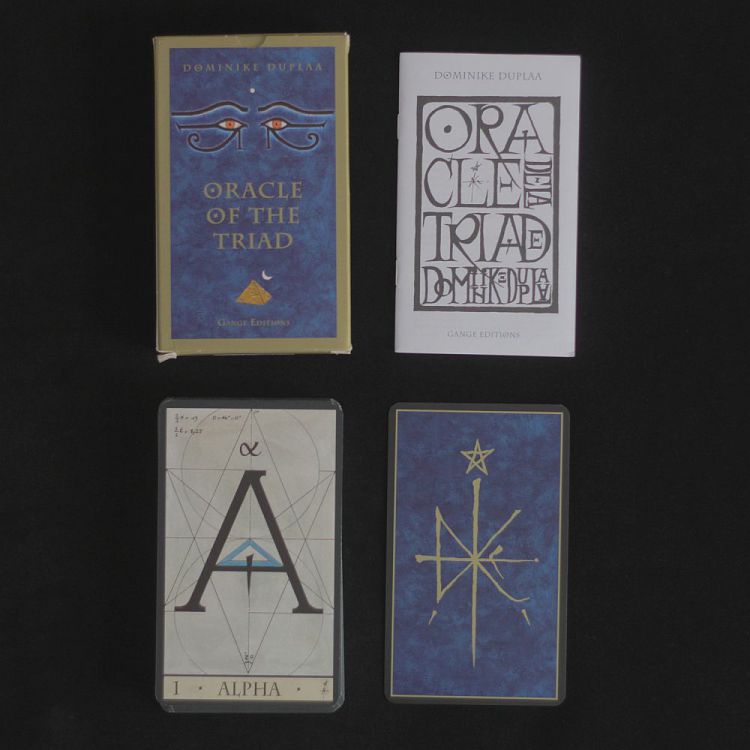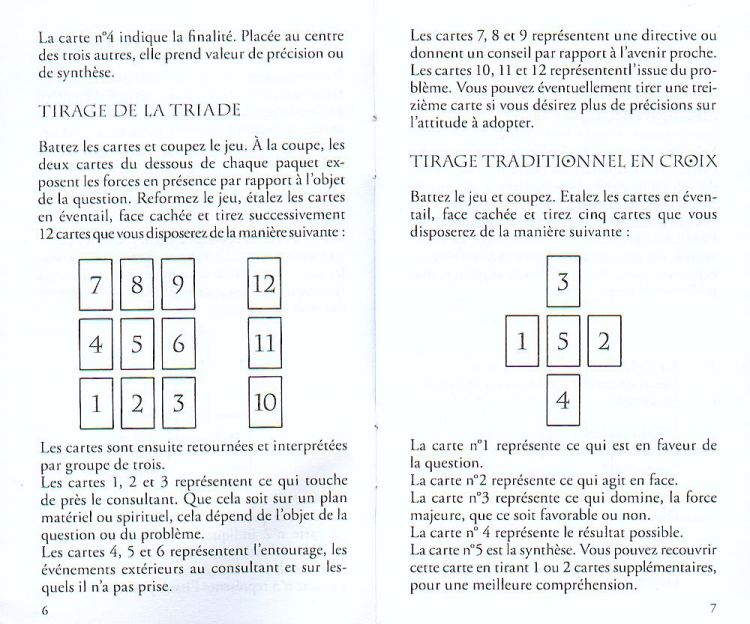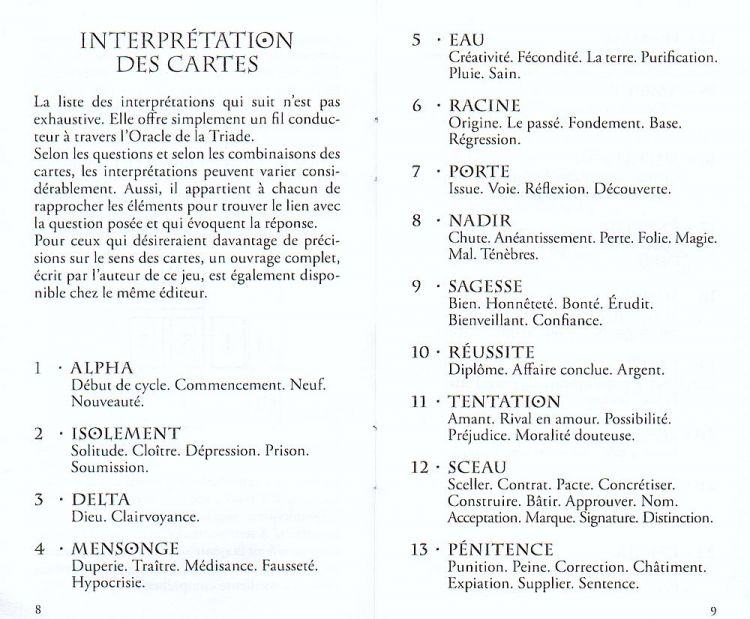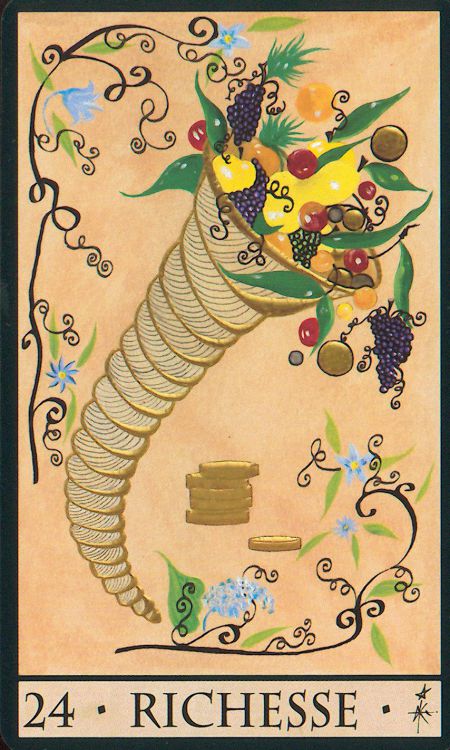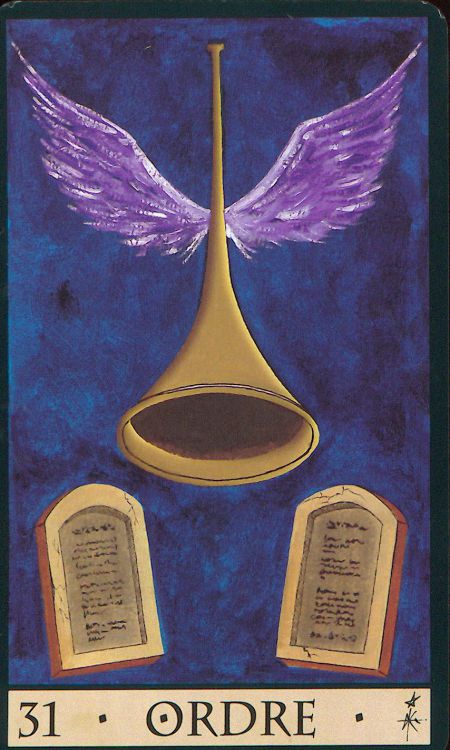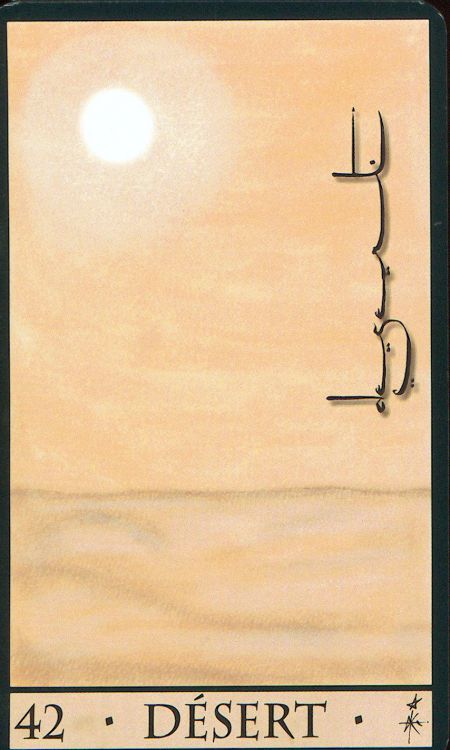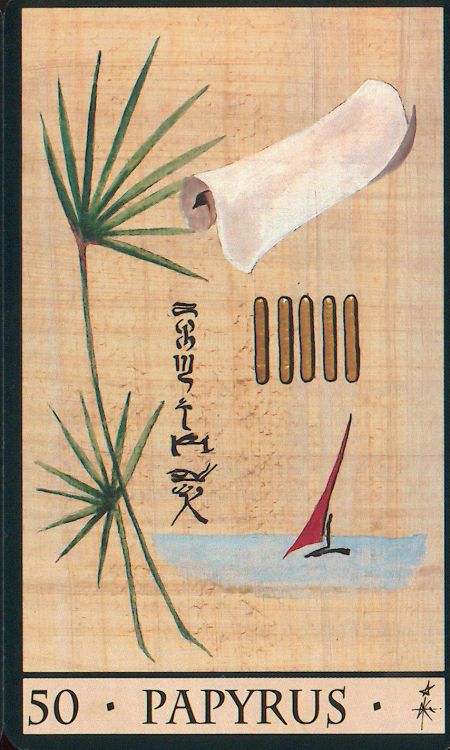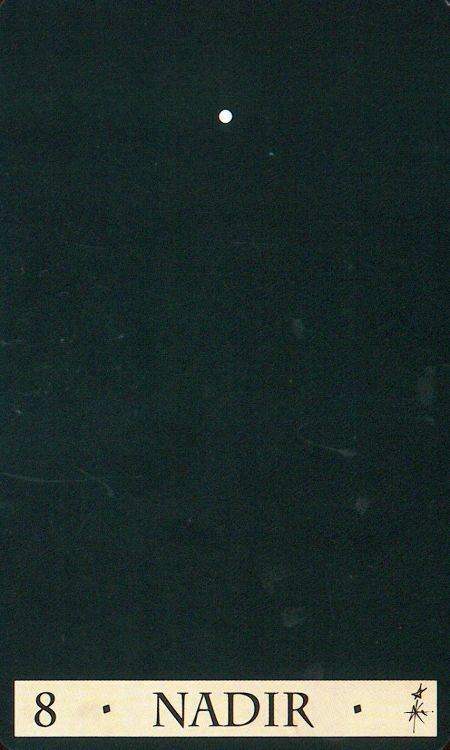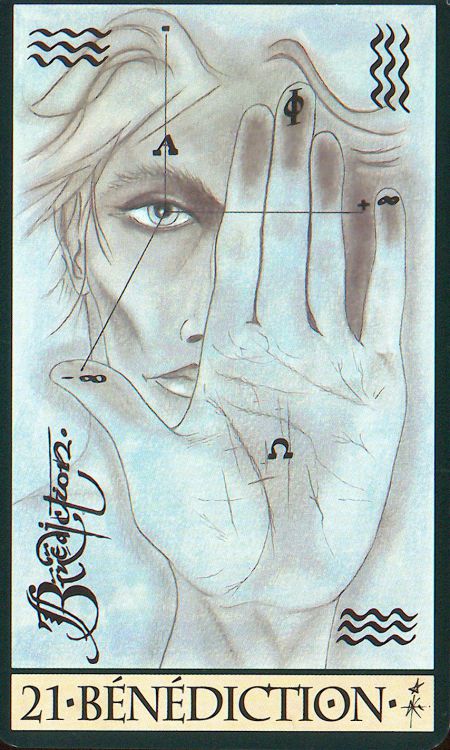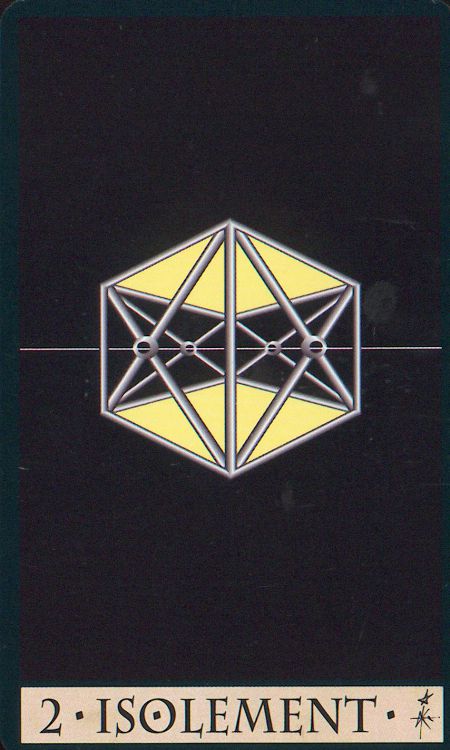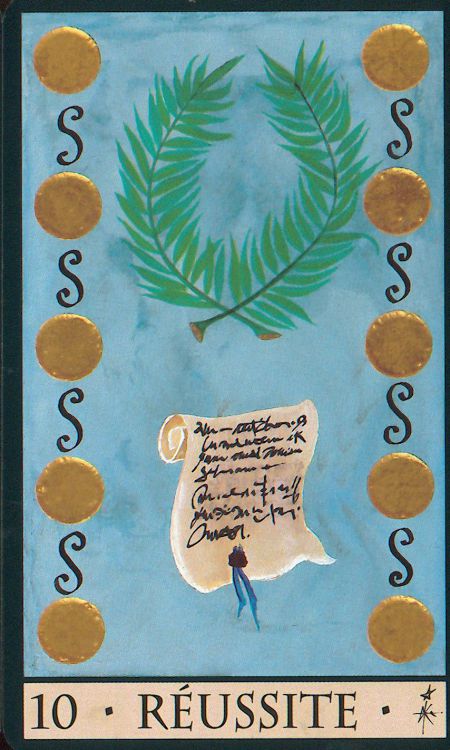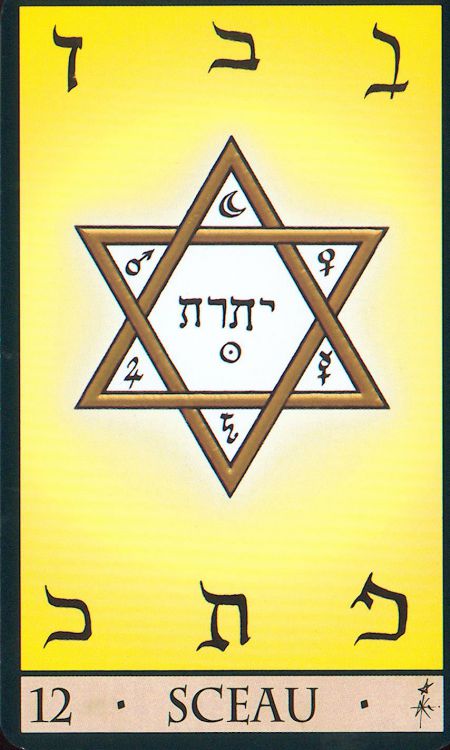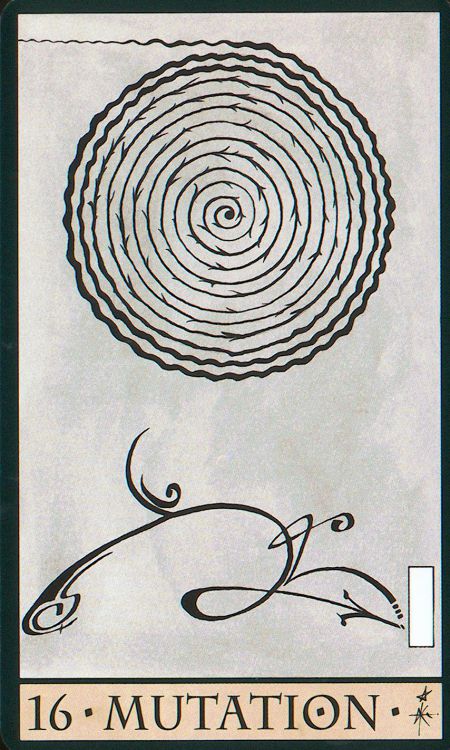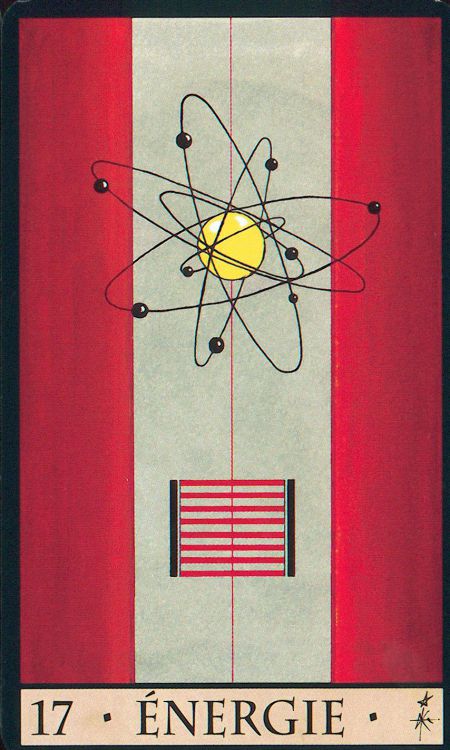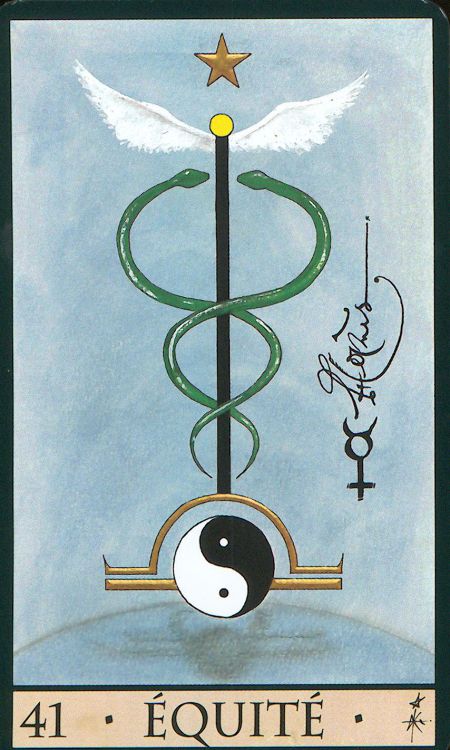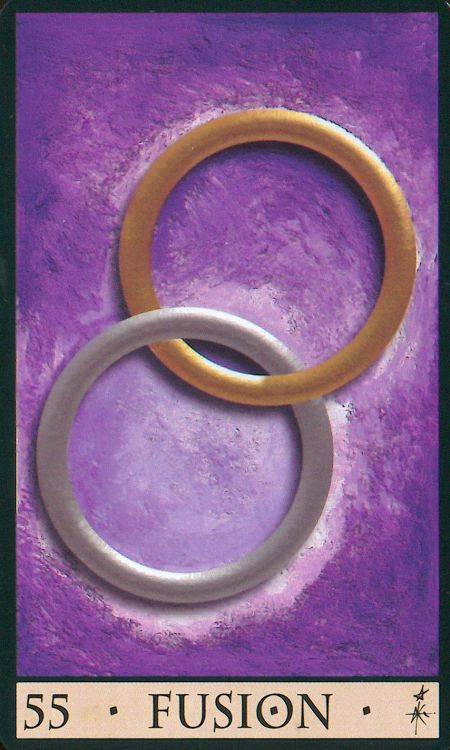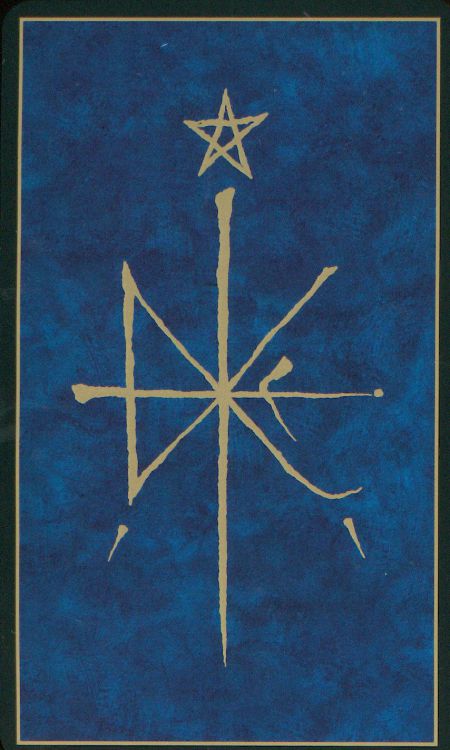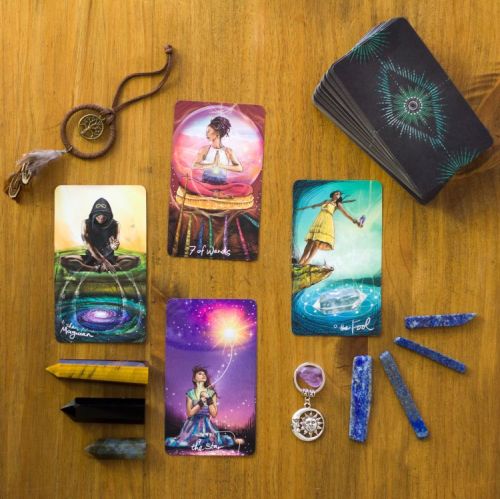I regret the absence of descriptions of the cards in the booklet. There are many calligraphic words on the illustrations, difficult to read or in a foreign language. This adds to the esotericism of the game. One would think that everything is done to make the purchase of the book on the game indispensable, and I find this inappropriate.
Graphically I'm not attracted to illustrations, but it's a matter of taste, a lot of people like this game. The drawings are quite neutral (which I like) but from the whole game there is a tense atmosphere. The strokes of the drawings are often sharp as claws. It may be inappropriate to use these cards for consultants, the vast majority of whom are in need of comfort and caring. Even positive cards such as 29 - Elevation, 30 - Forgiveness, 33 - Birth do not create a bright mood.
The cards mix many concepts that are closely associated with divination, prediction and clairvoyance. Despite all this oracle could be used for psychological purposes, thanks to the names of the cards that allow a psychological interpretation. However, there are oracles on the market dedicated to this divinatory and psychological approach, such as the "Everyday Witch oracle".
In the end, I find this game esoteric and above all elitist, as is the French culture, so it's not surprising that such a game was born and developed in France. For me, it is too serious and too full. Also, if a French player could very well make this game his own, I am not sure that an Anglo-Saxon could be at ease with it.
An advanced practitioner, doing more prediction or clairvoyance, may like and prefer this game against competitors such as the Gé Oracle ( review here ), Belline Oracle ( review here ), or simply a Lenormand ( review here ). A practitioner seeking above all a psychological game will probably turn to Anglo-Saxon oracles. Finally, to begin with, this game does not seem ideal to me, because the details of the illustrations often seem obscure and require an explanatory text, not provided with the cards.

